Did you know that a single pepper plant can produce up to 50 peppers? That’s right! Growing pepper seeds can lead to a bounty of flavorful peppers, adding a spicy kick to your culinary creations. Whether you’re a gardening enthusiast or a first-time grower, join me on this zesty adventure as we explore the essentials of selecting the right pepper seeds, potting soil, planting techniques, and caring for your pepper plants.
Key Takeaways:
- Discover the various jalapeno pepper varieties and their unique flavors and heat levels.
- Learn how to select the right containers and soil for optimal growth.
- Master the art of planting and germinating pepper seeds for healthy seedlings.
- Uncover essential care tips to ensure the success of your pepper plants.
- Harvest and store your own pepper seeds for future planting and culinary delights.
Selecting the Right Variety
When it comes to growing pepper seeds, selecting the right variety is crucial. You want to choose peppers that not only match your flavor preferences but also align with your desired level of heat and growth characteristics. Below are some popular jalapeno pepper seed varieties that offer a range of flavors and spice levels:
| Variety | Flavor | Heat Level |
|---|---|---|
| Classic Green Jalapeno | Traditional spicy jalapeno flavor | Moderate |
| Red Jalapeno | Slightly sweeter and spicier taste | Moderate to high |
| Tam Mild Jalapeno | Jalapeno flavor without intense heat | Mild |
| Early Jalapeno | Extra heat compared to the classic jalapeno | Hot |
| Jalafuego | Intense heat, similar to the early jalapeno | Hot |
| Purple Jalapeno | Unique and ornamental with a slightly milder flavor | Moderate |
Consider your personal flavor preferences and the desired intensity of heat when selecting your jalapeno pepper seeds. Whether you enjoy the classic green jalapenos for their versatility, the heat and color of red jalapenos, the milder taste of Tam Mild Jalapeno, or the unique twist of Purple Jalapeno, there is a variety that suits every pepper lover’s palate.
Selecting Containers and Soil
Choosing the right containers and soil is essential for successfully growing pepper seeds. To ensure healthy root growth, opt for containers with a minimum diameter and depth of 12 inches. Plastic pots are lightweight and retain moisture well, while terracotta pots offer better breathability. Make sure that the containers have adequate drainage holes to prevent waterlogging.
When it comes to soil, using a high-quality potting mix formulated for container gardening is key. Consider adding organic matter like compost or well-rotted manure to enrich the soil and provide essential nutrients. It’s also important to monitor the pH level of the soil and adjust it if necessary.
Proper preparation of containers and soil sets a strong foundation for your pepper plants to thrive.
Container Materials Comparison
| Container Material | Advantages | Disadvantages |
|---|---|---|
| Plastic Pots | Lightweight, retain moisture well | May degrade over time |
| Terracotta Pots | Better breathability, allow excess moisture to evaporate | Require frequent watering, breakable |
Tips for Good Soil
- Use a high-quality potting mix formulated for container gardening.
- Add organic matter like compost or well-rotted manure to enrich the soil.
- Monitor the pH level of the soil and adjust it if necessary.
- Ensure the soil has good drainage to prevent waterlogging.
Planting and Germination
Successfully planting and germinating pepper seeds is a crucial step in growing pepper seeds. To ensure optimal germination, start by choosing high-quality jalapeno seeds. If you want to speed up the germination process, consider soaking the seeds in warm water for a few hours.
To get started, plant the seeds in seed trays or small pots using a seed starting mix. Make sure to plant the seeds about a quarter-inch deep in the soil and space them at least an inch apart. Optimal germination requires a consistent temperature range of 75-85°F.
Throughout the germination process, it’s important to keep the soil moist but not waterlogged. You can achieve this by lightly watering the soil whenever it starts to dry out. Once the seedlings emerge, provide them with plenty of light. This can be natural sunlight or artificial grow lights.
Transplant the seedlings into larger pots once they have 2-3 true leaves. This will give them more room to grow and develop strong roots. Remember to handle the delicate seedlings with care during the transplanting process.
Jalapeno Seed Germination Tips:
- Choose high-quality jalapeno seeds
- Consider soaking the seeds in warm water for a few hours
- Plant the seeds about a quarter-inch deep in the soil
- Space the seeds at least an inch apart
- Maintain a consistent temperature range of 75-85°F
- Keep the soil moist but not waterlogged
- Provide plenty of light once the seedlings emerge
- Transplant the seedlings into larger pots when they have 2-3 true leaves
| Planting and Germination Tips | Planting and Germination Tips |
|---|---|
| Choose high-quality jalapeno seeds | Consider soaking the seeds in warm water |
| Plant the seeds about a quarter-inch deep in the soil | Space the seeds at least an inch apart |
| Maintain a consistent temperature of 75-85°F | Keep the soil moist but not waterlogged |
| Provide plenty of light once the seedlings emerge | Transplant the seedlings after they have 2-3 true leaves |
By following these planting and germination tips, you will ensure a strong start for your pepper plants and set them up for success.
Caring for Pepper Plants
Proper care is essential for your pepper plants to thrive and produce a bountiful harvest. By following these guidelines, you’ll ensure that your pepper plants receive the care they need to flourish.
Watering Pepper Plants
Water your pepper plants when the top inch of soil becomes dry to the touch. It’s important to maintain consistent moisture without overwatering, as this can lead to root rot. Avoid letting your plants sit in standing water, as this can also cause damage. Remember, it’s always better to underwater than to overwater.
Sunlight for Pepper Plants
Pepper plants require at least 6-8 hours of direct sunlight per day to thrive. Be sure to position your pots in a sunny spot, such as a sunny window or a well-lit balcony. If you’re growing your peppers outdoors, choose a location with ample sunlight exposure.
Soil for Pepper Plants
Pepper plants prefer a rich, well-draining soil. Opt for a high-quality potting mix formulated for vegetables or peppers. It’s a good idea to add organic matter like compost or well-rotted manure to enrich the soil and improve its fertility. Regularly monitor the pH level of the soil and adjust it if necessary to ensure optimal growing conditions.
Fertilizing Pepper Plants
Pepper plants benefit from regular fertilization during the growing season. Apply a balanced fertilizer specifically formulated for vegetables every 4-6 weeks. Be cautious not to over-fertilize, as this can lead to excessive leaf growth at the expense of fruit production.
Pruning Pepper Plants
Pruning pepper plants helps promote healthy growth and productivity. Remove any dead or diseased leaves or branches to prevent the spread of diseases. You can also pinch out the top buds to encourage bushier growth. However, be careful not to prune excessively, as this can reduce the plant’s ability to produce peppers.
By providing the right care, including proper watering, sunlight exposure, soil quality, fertilization, and pruning, you’ll ensure the success of your pepper plants. Follow these guidelines, and you’ll be rewarded with a bountiful harvest of flavorful peppers.
Harvesting and Using Pepper Seeds
Harvesting pepper seeds is an exciting moment in your spicy garden adventure. Allow the peppers to fully ripen on the plant before harvesting. Cut open the peppers and scrape out the seeds. Rinse the seeds thoroughly to remove any pulp residue, and spread them out to dry in a well-ventilated area.
Once dry, store the seeds in a cool and dry place in labeled envelopes or containers. Pepper seeds can be used for future planting or shared with other gardening enthusiasts. You can also use the seeds in your culinary creations to add a spicy kick to your dishes. Experiment with different recipes and enjoy the flavors of your homegrown pepper seeds.
Preserving and Storing Pepper Seeds
If you want to preserve your pepper seeds for future use, proper storage is essential. Here’s a simple guide to help you preserve and store your pepper seeds:
- Ensure that the seeds are completely dry before storing them. Any moisture can lead to mold or fungus growth.
- Place the seeds in labeled envelopes or small airtight containers, preferably made of glass or plastic.
- Store the envelopes or containers in a cool and dry place, away from direct sunlight and extreme temperature fluctuations.
- Consider adding a desiccant packet or silica gel to absorb any remaining moisture.
- Check your stored seeds periodically for any signs of moisture or pests.
| Method | Advantages | Disadvantages |
|---|---|---|
| Drying | Easiest method, retains seed viability | Takes time and requires proper drying conditions |
| Freezing | Long-term preservation, prevents seed decay | Potential damage due to moisture, requires careful thawing |
| Vacuum sealing | Keeps seeds dry and protected from pests | Requires special equipment, can be costly |
“Properly harvested and stored pepper seeds can remain viable for several years, ensuring future pepper plant success.” – Me
By following these preservation techniques, you can enjoy a bountiful supply of pepper seeds for years to come.
Growing Hot Pepper Seeds: A Fiery Adventure
If you’re up for a fiery adventure, join me in growing hot pepper seeds. These super-hot varieties, including habanero peppers, ghost peppers, Carolina Reaper peppers, and other hot pepper seeds, promise to add an intense heat to your dishes. While the growing process for hot pepper seeds is similar to that of jalapeno peppers, there are a few things to keep in mind due to their extreme spiciness. Strap in and let’s dive into the world of growing and savoring these heat-packed treasures.
Choosing the right hot pepper seeds is essential to ensure a successful and flavorful harvest. With various hot pepper varieties available, including habanero, ghost, and Carolina Reaper, you’ll have a range of options to explore. Select the varieties that match your heat tolerance and culinary preferences. Whether you want a punch of intense spice or a milder heat level, there’s a hot pepper variety suited to your taste buds.
When it comes to containers and soil, hot pepper seeds have similar requirements to other pepper varieties. Ensure that the containers have a minimum diameter and depth of 12 inches to accommodate the growth of the pepper plants’ roots. Use well-draining soil enriched with organic matter to provide the plants with the nutrients they need. Proper container size and soil preparation are crucial for the hot pepper plants to thrive and produce abundant fiery fruits.
Planting and germinating hot pepper seeds follows the same basic steps as other pepper varieties. Start by planting the seeds in seed trays or small pots with a seed starting mix. Plant the seeds about a quarter-inch deep in the soil and keep them adequately spaced. Maintain a consistent temperature of 75-85°F for optimal germination. Once the seedlings emerge, provide them with plenty of light and transplant them into larger pots when they have 2-3 true leaves. By following these steps, your hot pepper seeds will sprout and flourish, bringing the heat to your garden.
Tip: As hot pepper seeds can cause skin and eye irritation, be sure to wear gloves and handle them with care during planting and harvesting.
H3: Caring for Hot Pepper Plants
Like all peppers, hot pepper plants require specific care to thrive. Water the plants when the top inch of soil becomes dry, providing them with consistent moisture without overwatering. Position the pots in a sunny location where the plants can receive at least 6-8 hours of direct sunlight per day. Ensure that the soil remains rich and well-draining throughout the growing season. Fertilize the hot pepper plants every 4-6 weeks with a balanced fertilizer to promote healthy growth and fruit development. Prune the plants as needed to maintain their shape and remove any diseased or damaged foliage.
| Hot Pepper Variety | Heat Level | Flavor Profile |
|---|---|---|
| Habanero | High | Fruity with intense heat |
| Ghost Pepper | Extreme | Fiery with a hint of sweetness |
| Carolina Reaper | Hottest pepper in the world | Intensely spicy and fruity |
Harvesting hot pepper seeds is an exciting culmination of your fiery adventure. Allow the peppers to fully ripen on the plant before cutting them open and extracting the seeds. Rinse the seeds thoroughly to remove any pulp residue and let them dry in a well-ventilated area. Once dry, store the seeds in labeled envelopes or containers in a cool, dry place until the next growing season.
“Growing hot pepper seeds is not for the faint of heart, but the thrill and the spice they bring to your dishes make it all worthwhile.” – Jane Doe
From their fiery heat to their unique flavor profiles, hot pepper seeds add excitement and intensity to your culinary creations. Experiment with various recipes and explore the endless possibilities of incorporating these super-hot peppers into your dishes. Whether you’re a fan of intense spice or looking to challenge your taste buds, growing hot pepper seeds will surely ignite your passion for heat.
Troubleshooting Pepper Seed Germination
Germinating pepper seeds can sometimes pose challenges. If you encounter difficulties with pepper seed germination, it’s important to understand and address the factors that may be hindering successful germination. Let’s explore some common issues and troubleshooting tips to help you overcome these obstacles.
Seed Quality
One possible reason for difficulties with pepper seed germination is the quality of the seeds. Ensure that you are using fresh, viable seeds from a reputable source. Low-quality or old seeds may have a lower germination rate, which can lead to poor results. Consider obtaining high-quality pepper seeds from trusted suppliers to improve your chances of successful germination.
Temperature
The temperature plays a crucial role in pepper seed germination. Peppers thrive in warm conditions, so it’s important to provide the optimal temperature range of 75-85°F (24-29°C) for successful germination. If your environment is too cool, consider using a heating mat or placing the seed tray in a warm location to maintain the ideal temperature.
Moisture
Proper moisture levels are essential for pepper seed germination. Ensure that the soil is consistently moist but not waterlogged. Overwatering can lead to fungal issues and rot, while underwatering can hinder germination. Monitor the moisture levels closely and adjust watering accordingly to provide the optimal conditions for the seeds to sprout.
Light
While peppers generally prefer full sun once they have sprouted, they do not require light during the germination process. In fact, they actually benefit from being in a dark environment during this stage. It’s important to provide a warm and dark location for pepper seeds to germinate. Once they have sprouted, gradually introduce them to light to avoid shock.
Troubleshooting Quote:
“Sometimes, even with the best efforts, pepper seed germination can be a challenge. Patience and perseverance are key. Don’t get discouraged if you encounter difficulties. Adapt your approach, experiment with different techniques, and learn from the experience. Gardening is a journey of discovery, and each challenge you overcome makes you a better gardener.” – Gardening Guru
If you continue to experience difficulties with pepper seed germination despite addressing these factors, don’t hesitate to seek guidance from experienced gardeners or consult reliable resources. Troubleshooting tips specific to your situation can offer valuable insights and solutions. Remember, each challenge is an opportunity to learn and grow as a gardener.
| Problem | Possible Solution |
|---|---|
| Low germination rate | Use fresh, viable seeds from a reputable source. |
| Cool temperature | Provide a warmth with a heating mat or warm location. |
| Inconsistent moisture | Maintain consistent moisture without overwatering. |
| Inadequate darkness | Ensure a warm and dark environment for germination. |
Pepper Seed Varieties and Options
When it comes to pepper seed varieties, the options are vast. In addition to the popular varieties like jalapenos, habaneros, and bell peppers, there is a world of heirloom, organic, specialty, and rare pepper seeds to explore.
Heirloom pepper seeds offer unique flavors and characteristics, passed down through generations. These varieties often have rich histories and can add a touch of nostalgia to your garden and culinary creations.
Organic pepper seeds ensure that your plants are grown without chemical pesticides or fertilizers. By choosing organic seeds, you can enjoy the fruits of your labor while prioritizing environmental sustainability.
Specialty and rare pepper seeds provide exciting additions to your garden. These varieties come in a wide range of flavors, shapes, colors, and heat levels. Exploring specialty and rare pepper seeds allows you to indulge in unique pepper flavors and appearances, making your garden truly stand out.
Discovering the diverse world of pepper seed varieties allows you to customize your garden to match your taste preferences and gardening goals. Whether you want to grow peppers with a rich history, prioritize organic gardening practices, or experiment with unique flavors, there’s a pepper seed variety that will meet your needs.
Pepper Seed Variety Examples
| Pepper Seed Variety | Characteristics |
|---|---|
| Heirloom Pepper Seeds | Passed down through generations, unique flavors and characteristics |
| Organic Pepper Seeds | Grown without chemical pesticides or fertilizers |
| Specialty Pepper Seeds | Unusual flavors, shapes, colors, and heat levels |
| Rare Pepper Seeds | Scarce varieties with distinct characteristics |
Peppers in the Kitchen: Recipes and Culinary Creations
Did you know that pepper seeds can elevate your culinary creations and add a flavorful kick to your dishes? Let’s explore a wide range of pepper recipes and embark on a fiery journey of culinary delights. Whether you prefer mild or spicy flavors, there’s a pepper recipe that’s perfect for you. Let’s get cooking and infuse our dishes with the unique heat and flavor that pepper seeds bring to the table.
Experiment with Spice Levels
One of the great things about pepper recipes is that you can experiment with different spice levels to suit your taste. Whether you’re a fan of mild heat or prefer a fiery sensation, there’s a recipe waiting to be discovered. Start with a dash of heat and progressively increase the spiciness as you become more adventurous in the kitchen.
Endless Possibilities for Culinary Creations
Pepper seeds open up a world of possibilities when it comes to culinary creations. Here are just a few ideas to kickstart your pepper-infused culinary journey:
- Create tantalizing hot sauces using a variety of peppers, such as jalapeno, habanero, or ghost peppers. Customize the heat level and flavor profile to your liking.
- Prepare zesty salsas that combine fresh tomatoes, onions, cilantro, lime juice, and a medley of chili peppers. Serve with chips or use as a versatile condiment.
- Add a tangy and spicy twist to pickles by incorporating sliced peppers into the brine mixture. Enjoy the satisfying crunch and flavorful kick of homemade pickled peppers.
- Stir-fry your favorite vegetables with a touch of heat by adding sliced peppers to the mix. The vibrant colors and bold flavors will take your stir-fry to the next level.
No matter which pepper recipe you choose, remember to adjust the spice level to suit your preferences. Don’t be afraid to explore new flavor combinations and get creative in the kitchen. Let your taste buds be your guide as you experiment with peppers in your dishes.
“Cooking is like painting or writing a song. Just as there are only so many notes or colors, there are only so many flavors—it’s how you combine them that sets you apart.”
– Wolfgang Puck
Spicy Pepper Recipes
| Recipe | Description | Spice Level |
|---|---|---|
| Jalapeno Popper Dip | A creamy and cheesy dip with a spicy twist, perfect for parties and gatherings. | Moderate |
| Cajun Shrimp Pasta | Spice up your pasta dish with succulent shrimp and a Cajun pepper-infused sauce. | Hot |
| Thai Red Curry | A fragrant and aromatic curry made with red chili peppers, coconut milk, and an array of vegetables and proteins. | Very Hot |
| Mango Habanero Salsa | A sweet and spicy salsa combining ripe mangoes, habanero peppers, and fresh herbs. | Extra Hot |
Feel free to modify these recipes to suit your personal taste preferences. Add more peppers for an extra kick or tone down the spiciness by reducing the amount. Let your creativity in the kitchen shine as you explore the world of pepper-infused culinary creations.
Image: A colorful and vibrant array of peppers, representing the diverse flavors that pepper seeds can bring to your kitchen.
Benefits of Growing Pepper Seeds
Growing pepper seeds offers numerous benefits beyond the rewarding experience of cultivating your own plants. Homegrown peppers provide you with a fresh and flavorful supply, ensuring that you have access to high-quality produce. By growing pepper seeds, you can also engage in organic gardening practices, avoiding the use of synthetic pesticides and fertilizers. Gardening itself offers therapeutic effects, promoting stress relief and mental wellbeing. Additionally, growing pepper seeds allows you to contribute to the diversity of pepper varieties and support sustainable food systems. Embrace the benefits of growing your own pepper seeds and enjoy the journey.
The Benefits at a Glance:
| Benefits | Description |
|---|---|
| Fresh and Flavorful Produce | Homegrown peppers provide a fresh and flavorful supply, adding a vibrant taste to your meals and recipes. |
| Organic Gardening | When growing pepper seeds, you can practice organic gardening, avoiding synthetic pesticides and fertilizers and ensuring a healthier produce. |
| Therapeutic Effects | Gardening offers therapeutic benefits such as stress relief and improved mental wellbeing, providing a fulfilling and calming experience. |
| Diversity of Pepper Varieties | With your own pepper seed garden, you contribute to the diversity of pepper varieties, exploring unique flavors and appearances. |
| Sustainable Food Systems | Support sustainable food systems by growing pepper seeds, promoting self-sufficiency and reducing reliance on external sources. |
Experience the joy of growing your own pepper seeds and reap the countless benefits it brings to your garden, your health, and your culinary adventures.
Conclusion
Growing pepper seeds is a spicy garden adventure that offers a truly rewarding and flavorful experience. Throughout this guide, we have explored the essentials of selecting the right pepper seeds, containers and soil, planting and germination techniques, and caring for your pepper plants. By following these steps, you can cultivate healthy pepper plants and enjoy a bountiful harvest of delicious peppers.
Whether you choose the classic jalapenos, explore the world of hot pepper varieties, or dive into the realm of heirloom and specialty peppers, growing pepper seeds opens up a world of culinary possibilities. From adding a kick to your favorite dishes to creating your own spicy recipes, the flavors of homegrown peppers will elevate your culinary creations to new heights.
Embark on your own spicy garden adventure and join me in the joy of growing pepper seeds. Discover the diverse range of pepper varieties available, experiment with different flavors and heat levels, and enjoy the satisfaction of nurturing your own plants from seed to harvest. Get ready to spice up your gardening journey and savor the incredible flavors that pepper seeds have to offer.

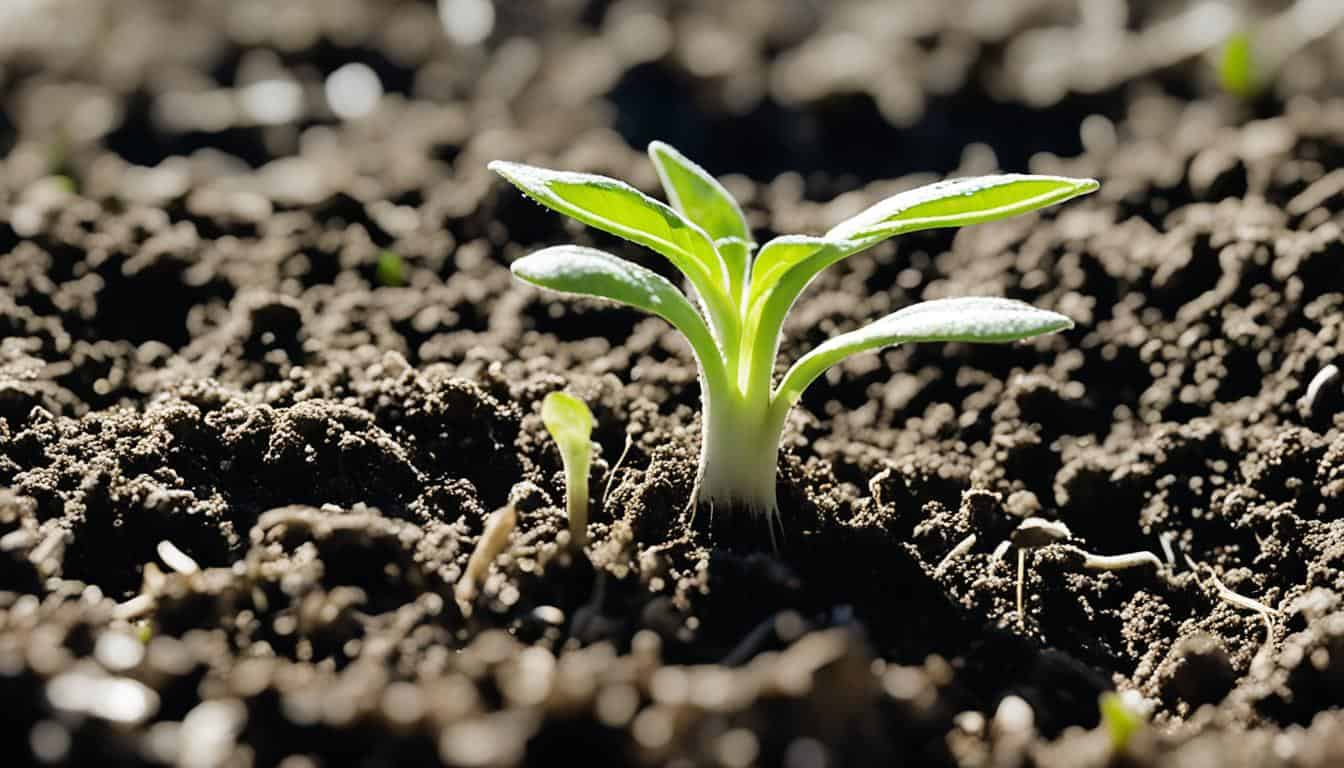
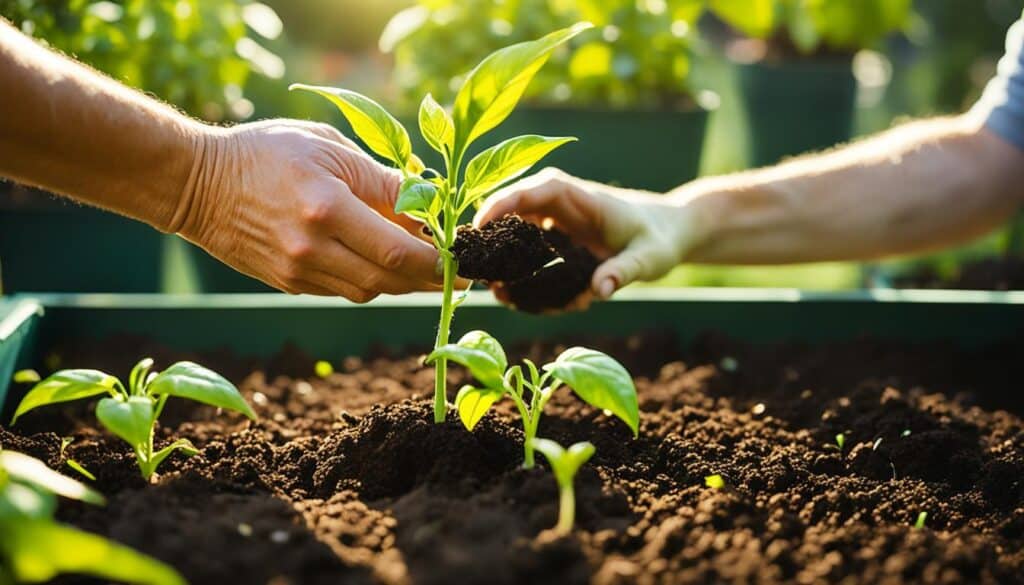
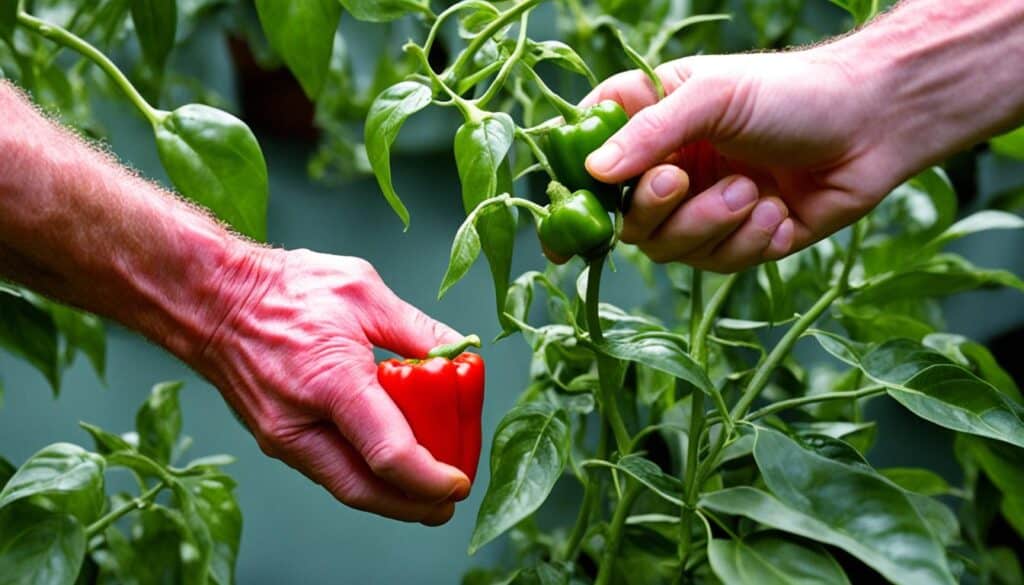

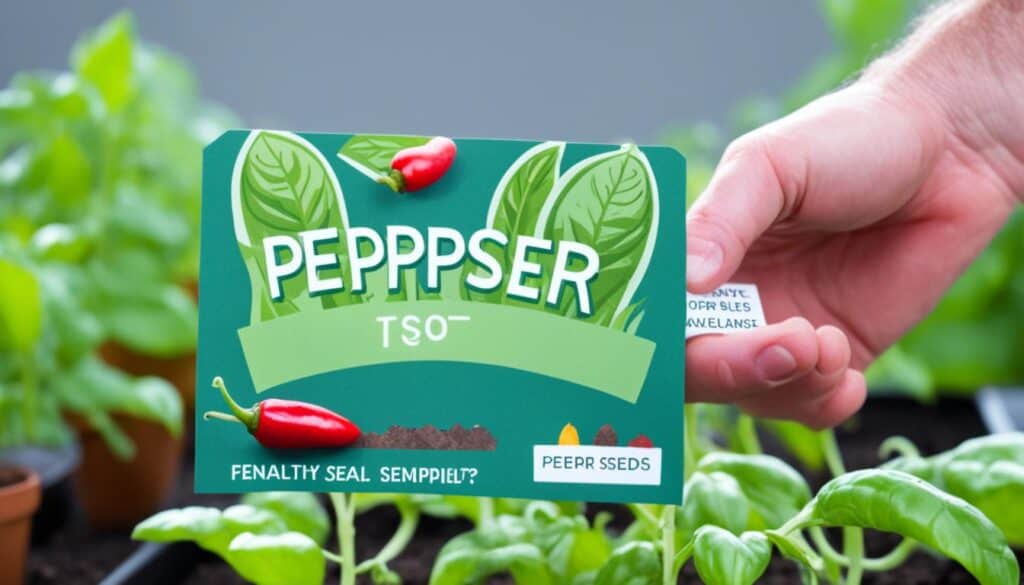
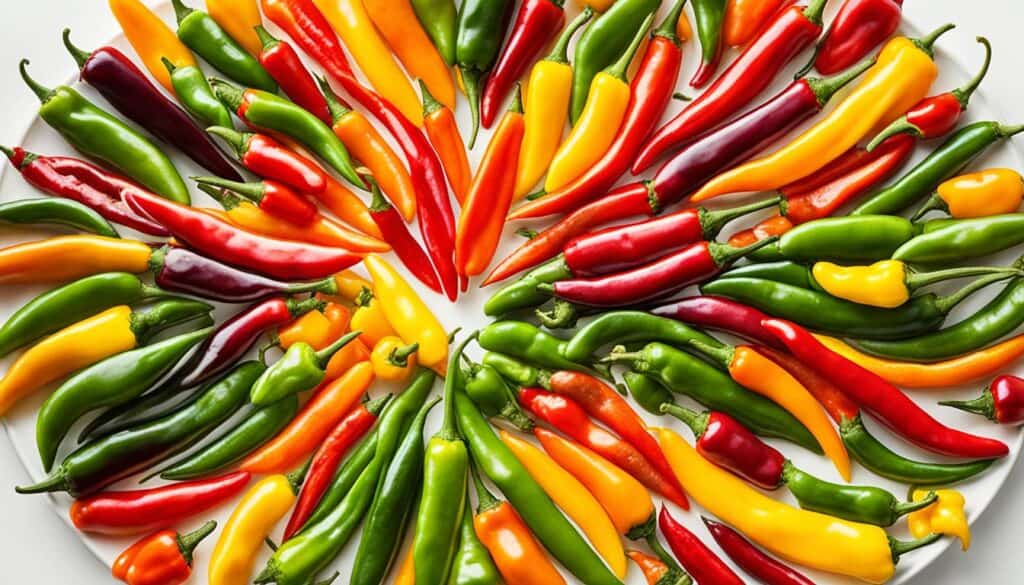



Leave a Reply